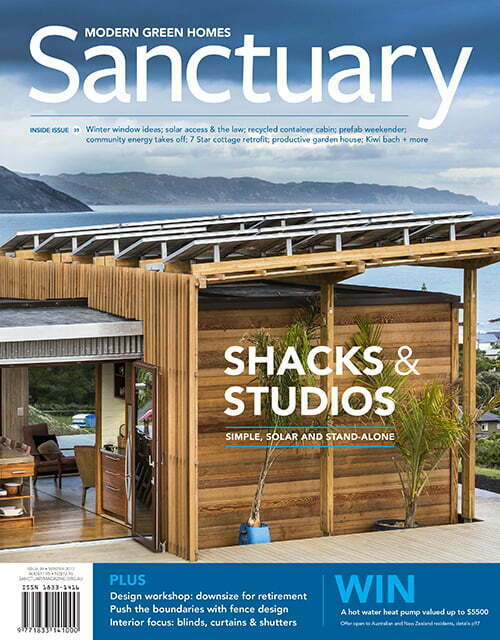Right to light: solar access and the law
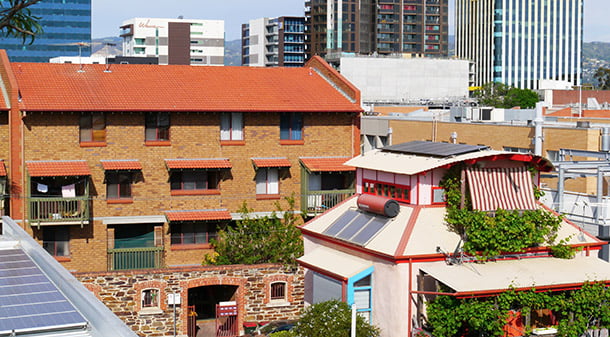
Australia’s legal regimes don’t explicitly protect solar access for solar panels or passive solar designed buildings. But, as more households fight through the courts for their right to light, there are important precedents being set across the country.
Solar access for the living areas of your home and/or office is a key consideration in achieving a highly sustainable and effective passive solar design, not to mention an important factor in improving the physiological health and psychological wellbeing of those living and working in these buildings. Direct sunlight is also fundamental for the effective function of solar photovoltaic (PV) arrays, solar hot water systems and traditional or solar-powered skylights.
However, circumstances can arise where direct sunlight into these important areas of a building, or onto these collectors, is partially or completely obscured by unchecked vegetation growth or increased development on nearby lots. Most states have various development controls or legal principles that regulate solar access, but the levels of protection over a landowner’s right to sunlight have plenty of room for improvement.
It is generally accepted that even the presence of an easement for the right to sunlight is a tenuous measure to protect solar access. However, there are a number of other ways in which private landowners can protect their living spaces and solar collectors from actual or threatened overshadowing.
Solar access and passive solar design
The legal regimes that regulate planning and development do not provide any explicit protection of solar access to a building, although certain planning laws which control development such as the construction of school or TAFE buildings and new residential flat buildings in NSW, include the requirement for overshadowing of neighbouring buildings to be limited only so much as to allow for a minimum of three hours of solar access to principal private open spaces between 9am and 3pm on the winter solstice (21 June).
This ‘worst case’ scenario for solar access is considered to be the acceptable standard for measuring overshadowing on existing buildings by trees or new development, as well as the standard by which new residential flat buildings are approved. This is concerning for two reasons.
Firstly, effective passive solar design for living spaces situated along the northern elevation of a building requires more than a mere three hours of direct sunlight striking the thermal mass within these living spaces (insulated concrete floors, internal brick walls). Every hour of lost sunlight has an adverse impact on the ‘enthalpy effect’ (in this instance, the ability of the material constituting the thermal mass, i.e. concrete, to store heat) that provides passive heat to the room, such that most passive solar design is ineffective with only three hours of direct sunlight.
Secondly, these overshadowing standards do not consider any impact upon the operation of solar collectors, with there being a sharp reduction in effectiveness for every hour of lost sunlight during the winter solstice.
Solar PV development controls
A number of local governments across Australia have taken it upon themselves to create development controls that operate to protect, or at least inform, the installation of solar panels on residential and commercial buildings. The City of Sydney, for example, has a two-fold requirement in the section of its Development Control Plan 2012 that considers solar panels. Owners of solar panels must take into account the potential permissible building form on adjacent properties when orienting the panels, while proponents of development applications for new buildings or alterations and additions to existing buildings are to maintain solar access to existing solar panels, having regard to a number of factors.
These are not mandatory controls for new development, and non-compliance with development controls may not of itself be grounds for refusal of a development application. As such, while these are useful guidelines that indicate council’s preferred position, they are not tantamount to complete protection of solar access to solar collectors. This is a similar position taken by many local governments across Australia, so check the relevant guidelines in your local Development Control Plan, or similar planning controls.
In Victoria, a number of local governments have published advisory notes to be considered in the assessment of development that might overshadow solar panels, with an example being the Moreland Planning Scheme (1) clauses that direct buildings to be oriented to make use of solar energy, and not to ‘unreasonably reduce’ the energy efficiency of existing adjoining dwellings. Note that this loose guideline permits ‘reasonable’ overshadowing and gives minimal consideration to poorly placed solar collectors.
Density
The denser the development permitted in or near the zone your property is in, the less expectation you can have that your right to solar access can be protected. Many planning guidelines determined by local government, and a number of legal principles established through case law, have enshrined this presumption as almost certain.
Established legal principles
Disputes over solar access have been heard in NSW, Victoria, South Australia and Western Australia. These disputes have covered overshadowing of panels and living spaces by both trees and adjoining development, and have resulted in a number of principles being established in these states. Such principles include but are not limited to the following:
- Overshadowing of a passive solar-designed home arising out of poor design of a neighbouring development is not acceptable, even if it satisfies numerical guidelines; (2)
- Trees may be the subject of a height restriction if there is sufficient proof that their overshadowing compromises the passive solar heating of a neighbouring property; (3)
- Developments may be ordered to be modified if an alternative design would result in greater solar access to a passive solar-designed house; (4)
- A loss of sunlight to a solar array, resulting in a total loss of energy generation greater than 50 per cent, has been held to be unreasonable; (5)
- Solar panels that are poorly placed will be unlikely to be protected from overshadowing by neighbouring development; (6)
- The term ‘solar access’ could be defined as ‘sunlight onto walls and other surfaces of a house’; (7)
- Even the additional heating and cooling costs of less than $100 a year that would be necessitated through lost efficiency in a solar passive-designed home has been held to be grounds to order a neighbouring development to be adjusted to eliminate overshadowing; (8) and
- New ‘high quality’ residential developments ought to be considerate of their context if their surrounds include a number of buildings that exhibit solar passive design or feature solar collectors, even if development controls might otherwise permit overshadowing. (9)
Thermal mass out in the cold
The above principles were not determined in consideration of factors such as the amount of sunlight that needs to fall on thermal mass within private open living spaces. It is apparent that this aspect of solar access has not been judicially considered so as to form a precedent that might be relied upon by owners of homes with passive solar design features. An opportunity might exist to argue that bodies of thermal mass within private open living spaces (adequately insulated concrete floors, for example) ought to be afforded the same degree of protection as solar panels or solar hot water systems, given that such bodies are technically ‘solar collectors’.
Right to light at your place
As always, you ought to seek legal advice if you feel that your rights are being unfairly or unlawfully impacted by trees or development.
There is no enshrined right to solar access to the extent required by solar passive homes to remain effective in most states and territories. The common law does not generally recognise a neighbour’s right to sunlight unless it is protected by an easement, which is an extremely undesirable arrangement for most private landowners and can be easily rendered void by state laws. Even then, unless the terms of the easement are finely crafted, such a right is unlikely to be enforceable.
Further, there is no official right to protect yourself against overshadowing of solar panels by neighbouring development in most states and territories, although there are development controls that make the reasonable permissibility of development and the reasonable protection of solar access competing factors in deciding whether a local government should grant consent to a proposed development.
Compromise and negotiation
In the event that your living spaces or solar collectors are being overshadowed by a proposed development, it is best to register your objection to the development application through your local government during the provided notification period. This will give you the ability to voice your concerns to council and to the project proponent, and potentially enable you to engage in presenting an alternative design solution that maximises the amenity and development potential of your neighbour’s property, while still protecting the required amount of sunlight into your solar passively designed building or onto your solar collectors.
If you cannot reach an agreement on an alternative design that would minimise overshadowing, consider entering into an arrangement with your neighbour to reimburse you for lost energy generation or increased heating and/or cooling bills (or even the installation of a reverse-cycle air conditioner that may not have previously been required). In the event that there is no suitable area of roof that receives an adequate amount of direct sunlight to allow for the relocation of affected solar panels, you might consider selling the panels or other collectors and requiring your neighbour to make up for the shortfall in the value of the panels or other collectors, in addition to the other mitigation measures mentioned above.
If the overshadowing to your living areas or solar collectors is caused by trees or hedges, you should check the laws in your state or territory that control how such disputes are to be conducted and/or seek legal advice. If you live in Tasmania, Victoria or Western Australia, where no legislative regime exists relating specifically to tree disputes, you might want to consider entering into an arrangement with your neighbour that balances their privacy concerns with your right to the required amount of solar access. Such an arrangement might require a contribution towards the cost of maintaining the vegetation at the required height, so you ought to consider the financial cost of entering into such an arrangement in comparison to the financial savings generated by the passive solar elements of your home and/or the solar collectors on your roof.
Community Justice Centres and Neighbourhood Justice Centres can mediate disputes regarding trees impacting upon your solar access, and should be approached prior to any legal action being commenced.
Need for a national approach
There should be a continued shift towards the protection of solar access in Australia, given the need to move towards a low carbon economy and increase the use of solar and battery storage at a residential and commercial level. The commensurate limitation on potential development of surrounding properties, particularly in residential areas, means that this paradigm shift may face considerable opposition. Without continued pressure from homeowners and industry bodies on policy makers to enforce a national approach to this issue, the current ad hoc and inadequate approach to the protection of solar access will continue.
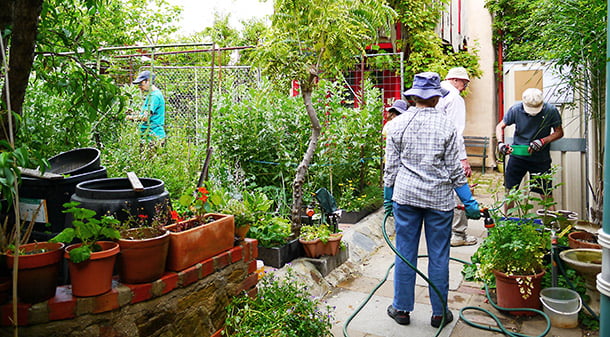
Case study: You win some, you lose some: protecting solar access at Christie Walk, SA
When she moved into one of the 27 dwellings in the Christie Walk development in the Adelaide CBD, Josephine Thomas didn’t expect to become a student of the local planning code. But her self-education began when a four-storey development proposal next door to the north threatened to block most of the direct sunlight required for her passive solar designed home, her solar PV and solar hot water systems and the communal vegie garden.
“We got hold of the development plan, read it and tried to start understanding it. We read previous judgements of the ERD [Environment, Resources and Development] court, started to talk to people and investigate what the legal process was and what rights we had,” said Josephine. She found there were few explicit protections for solar access. “But we did find there are avenues and mechanisms to oppose loss of solar access that are not necessarily obvious.”
The Development Assessment Panel had already rejected the development on neighbourhood character grounds, among other concerns, and the developer had appealed. “But we were not really notified of any of that,” said Josephine. “You don’t automatically get to be involved.” She then discovered that a ‘joinder’ application would allow her to join with council, and this offered the chance for her to present data to the court explaining how overshadowing would impact her energy bills. “A joinder application is very mysterious. Council wasn’t inviting it, we had to work it out ourselves. But once we were involved we had very well developed arguments which their team could then use. We had done a lot of research and I made a good witness as an informed consumer.”
Sunlight to windows, patios and other principal living areas are protected in development controls, but are often hard to quantify. Josephine found it was quite different at her house: “With PV and solar hot water collectors you can actually provide hard data to show impact. We gave them expert solar modelling showing losses from hot water and PV. We were able to give them great stats on electricity generation thereby proving how the running of household was going to change.”
Development control principles explicitly protect direct sunlight at the winter solstice (22 June) in order to ensure solar access even on the shortest day of the year. “It’s meant to be the worst-case scenario but this can be turned around,” said Josephine. “You get shadow diagrams at 20 paces and the argument can run that you don’t get much sun in the winter solstice anyway so what’s the problem? But winter isn’t the most productive time of year for gardens or PV.”
Rather than opposing its character, Josephine’s arguments centred on the overshadowing caused by the development’s unbroken bulk, which could be somewhat ameliorated with setbacks. “Character can be subjective. Some people don’t like Christie Walk and say it’s out of keeping with the local area,” says Josephine. “But if you look at congruity from the point of view of how far things intrude into the street, the development was going to be very intrusive and one of the things that lost [the developer] the case.”
The developer is reapplying for a four-storey building adjacent to Christie Walk, which has addressed many of council and Josephine’s concerns; he has also opened a dialogue with the community that had not happened the first time around. “We will still lose the solar hot water, but there are ways around that. We rejected the developer’s offer of a gas hot water system, though, because that is not a sustainable solution.” It is also likely Christie Walk will lose a majority of the sunlight to its community garden, but the larger setback to the north in the proposed re-design will protect Josephine’s passive solar house and solar PV.
“It’s not for mere mortals,” Josephine said of the process of representing herself in court. “It’s not transparent and is not cost free. We hear about the ERD court as being a no-cost jurisdiction. But we were warned if we went joinder and it went to the High Court we could be liable for all costs.”
The iconic Christie Walk is an environmentally sustainable development that has long been celebrated as an example of urban density done well, with its low-energy homes, shared spaces and productive garden. However, regardless of how many public figures go on promotional visits to the community each year, it was still possible for some of the best things about the site to be compromised. “There’s not a cohesive and overarching plan. Governments give rebates and incentives for one thing (such as open space and renewable energy) and then allow rebates and incentives for developers for features that are quite opposite. I’d like to see a plan of where the tall buildings should be, so residents know where panels, for example, can be guaranteed solar access.”
With strong arguments for Australian cities to become more dense, but also greener, the calls for clarity around solar access laws are becoming a chorus. In the meantime, the number of rooftop solar systems has expanded beyond 1.6 million, forcing more households to head to the courts to test their right to light.
1 http://www.moreland.vic.gov.au/globalassets/areas/strategic-planning/solar-panels—advisory-note-as-endorsed-by-council-13-july-2016.pdf
2 The Benevolent Society v Waverley Council [2010] NSWLEC 1082 at [137]
3 Kelly & anor v Dehnert & anor [2015] NSWLEC 1173 (20 May 2015)
4 Parsonage v Ku-ring-gai [2004] NSWLEC 347 (30 June 2004)
5 Chen v Melbourne CC & Ors (Red Dot) [2012] VCAT 1909 (13 December 2012)
6 John Gurry & Associates Pty Ltd v Moonee Valley CC & Ors (Red Dot) [2013] VCAT 1258
7 Kirkman v Hobsons Bay CC [2012] VCAT 1463 (17 September 2012)
8 Deodato v Moreland CC (Correction) [2014] VCAT 1583 (19 December 2014)
9 Ned Ritan Design v The Corp of the City Of Adelaide [2016] SAERDC 32
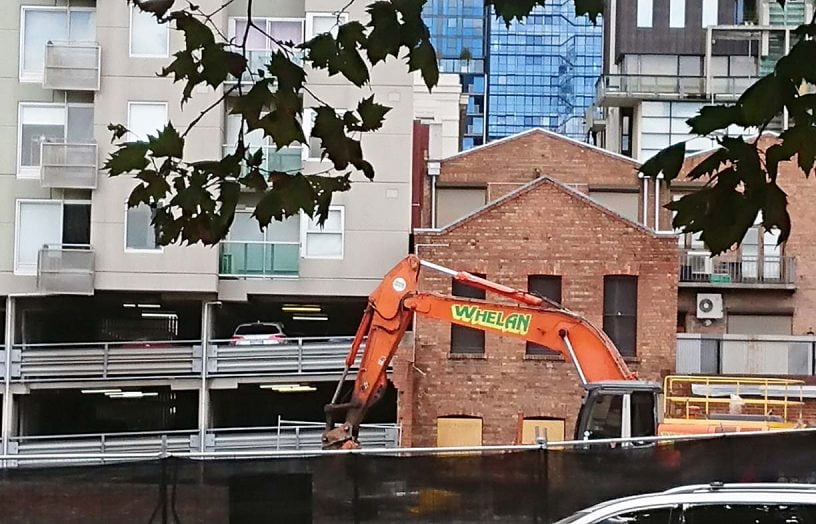 In focus
In focus
Inside the war on construction waste
Deconstructing buildings to salvage materials is less common than demolition for landfill – but could this be about to change?
Read more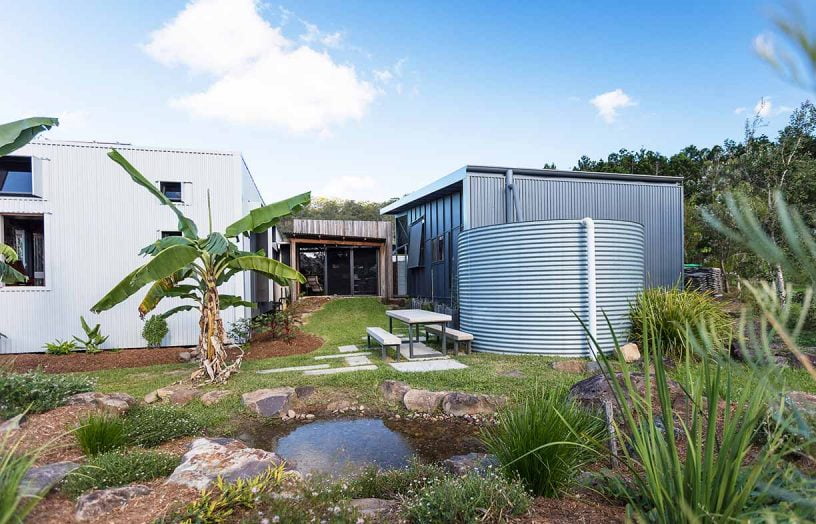 In focus
In focus
Lessons learnt
Five years ago we featured a house in the Currumbin Ecovillage on the Gold Coast that was designed using three pavilions to accommodate two households in a co-housing arrangement. How is their experiment evolving? We revisit to find out.
Read more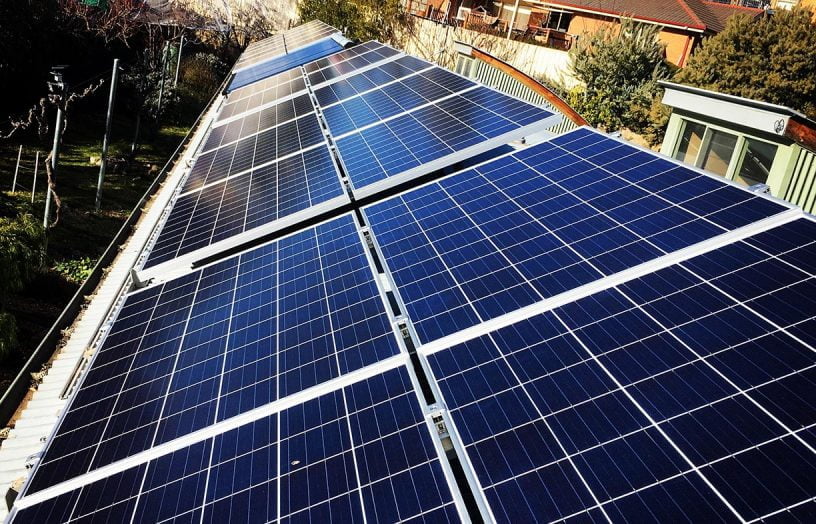 In focus
In focus
Get the most from your solar PV for summer cooling
Cooling your house using your rooftop solar system requires a bit of thought and planning, but when you get it right, the savings can be well worth it.
Read more

